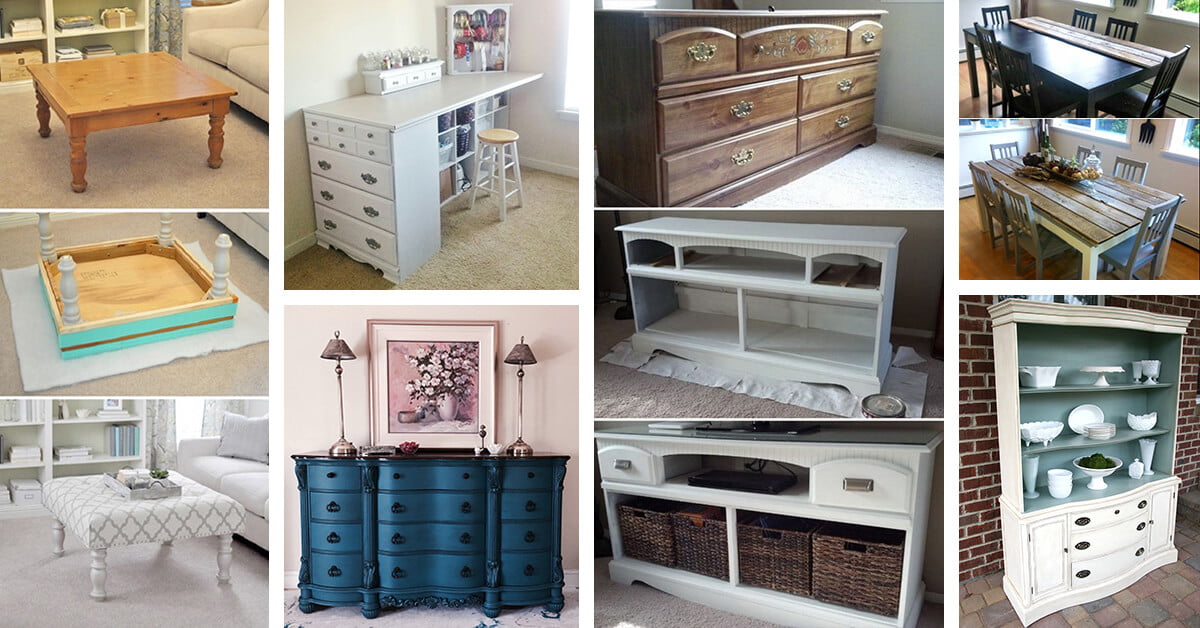Introduction
Are you tired of your old furniture but hesitant to part with it? Fear not! In this article, we delve into the exciting world of DIY furniture makeovers, offering 25 comprehensive insights to help you breathe new life into your cherished pieces. Let’s embark on a journey of creativity, cost-effectiveness, and the joy of refurbishing.
Identifying Furniture Pieces Suitable for Makeovers
When it comes to revamping your living space, the allure of transforming old furniture into chic, personalized pieces is undeniable. However, not all pieces are created equal when it comes to makeovers. Identifying furniture with potential for a stunning transformation is the key to a successful project.
Begin your hunt by seeking out sturdy pieces that have good bones. Solid wood frames or well-constructed pieces are ideal candidates for makeovers, as they provide a durable foundation for your creative endeavors. Look for classic shapes and timeless designs that can be easily updated to suit your style preferences.
Keep an eye out for unique features or details that can be accentuated during the makeover process. Intricate carvings, interesting hardware, or distinctive legs can add character and charm to the final result. Remember, the goal is to breathe new life into these pieces, so choose items that inspire your creativity.
Consider the functionality of the furniture as well. Pieces that serve a practical purpose, such as storage chests or side tables, can be both aesthetically pleasing and useful after the makeover. Assessing the potential for functionality ensures that your revamped furniture not only looks great but also serves a purpose in your home.
Considering the Condition, Material, and Style Before Starting
Before embarking on a furniture makeover journey, it’s crucial to conduct a thorough assessment of the piece’s condition, material, and style. These factors will influence the approach you take and contribute to the longevity of the revamped furniture.
Firstly, evaluate the condition of the furniture. Minor scratches or dents are often manageable, but extensive damage may require more intricate repairs. Ensure that the structural integrity is intact before investing time and effort into the makeover. It’s wise to fix any major issues before proceeding with the aesthetic transformation.
The material of the furniture plays a significant role in the makeover process. Different materials require specific techniques and products for refinishing. For instance, wood may need sanding and staining, while metal might require rust removal and a fresh coat of paint. Understanding the material will guide your decisions and help achieve the desired outcome.
Consider the existing style of the furniture and how it aligns with your vision for the revamped piece. Whether you’re aiming for a vintage, modern, or eclectic look, the original style provides a foundation for your creative direction. Harmonizing the existing style with your intended design ensures a cohesive and visually appealing result.
Surface Preparation: Sanding, Cleaning, and Repairing
FAQs
Q: Can I use any type of furniture for DIY makeovers?
Absolutely! While sturdier pieces are recommended, virtually any furniture can undergo a makeover. Assess the structural integrity and let your creativity guide the transformation.
Q: How long does a typical DIY furniture makeover take?
The duration varies based on complexity. Simple projects may take a weekend, while intricate transformations might span a few weeks. Patience is key for exceptional results.
Q: Is chalk paint suitable for all surfaces?
Chalk paint is versatile and adheres well to various surfaces, including wood, metal, and even fabric. Ensure proper preparation for optimal results.
Q: Can I combine multiple techniques in one makeover?
Certainly! Mix and match techniques to create a truly unique piece. Experimenting with different methods adds character and personalization to your furniture.
Q: Are DIY furniture makeovers cost-effective compared to buying new furniture?
Undoubtedly! DIY makeovers allow you to save money while expressing your creativity. Transforming existing pieces eliminates the need for expensive replacements.
Q: Where can I find inspiration for my DIY furniture makeover?
Inspiration is everywhere! Browse online platforms, visit flea markets, or explore interior design magazines for ideas that resonate with your style.
Conclusion
Embarking on a DIY furniture makeover journey is a rewarding endeavor that combines creativity, sustainability, and personal expression. By following these insights, you’ll not only breathe new life into old furniture but also discover the joy of crafting a home that reflects your unique style.


